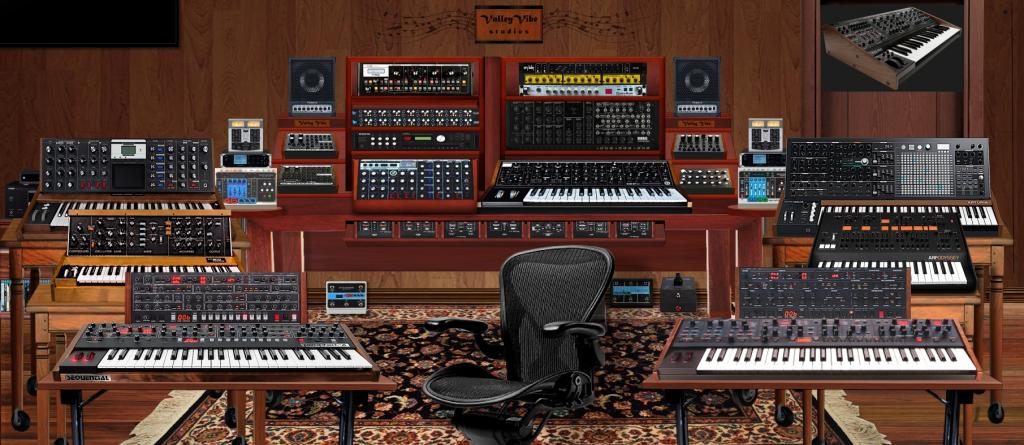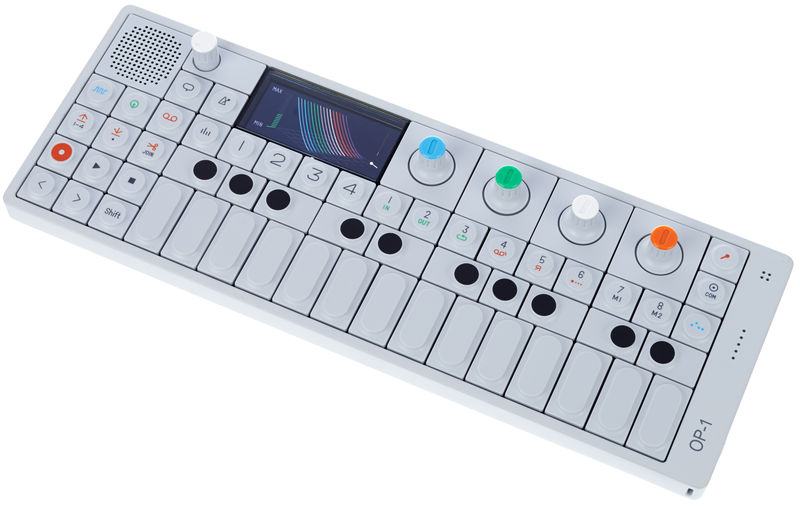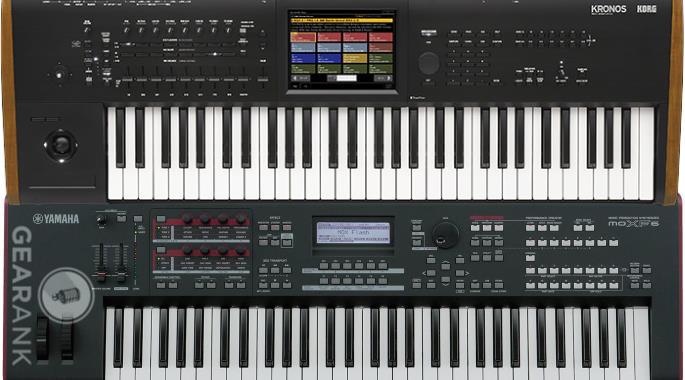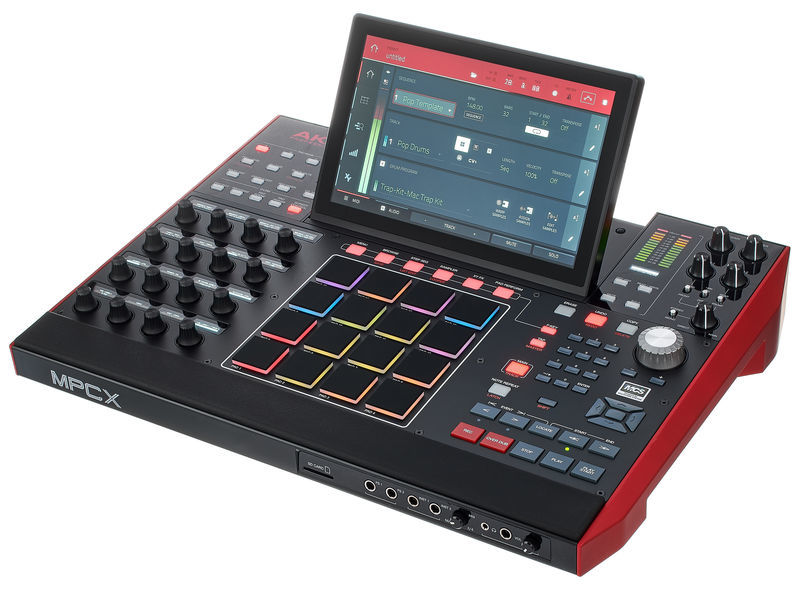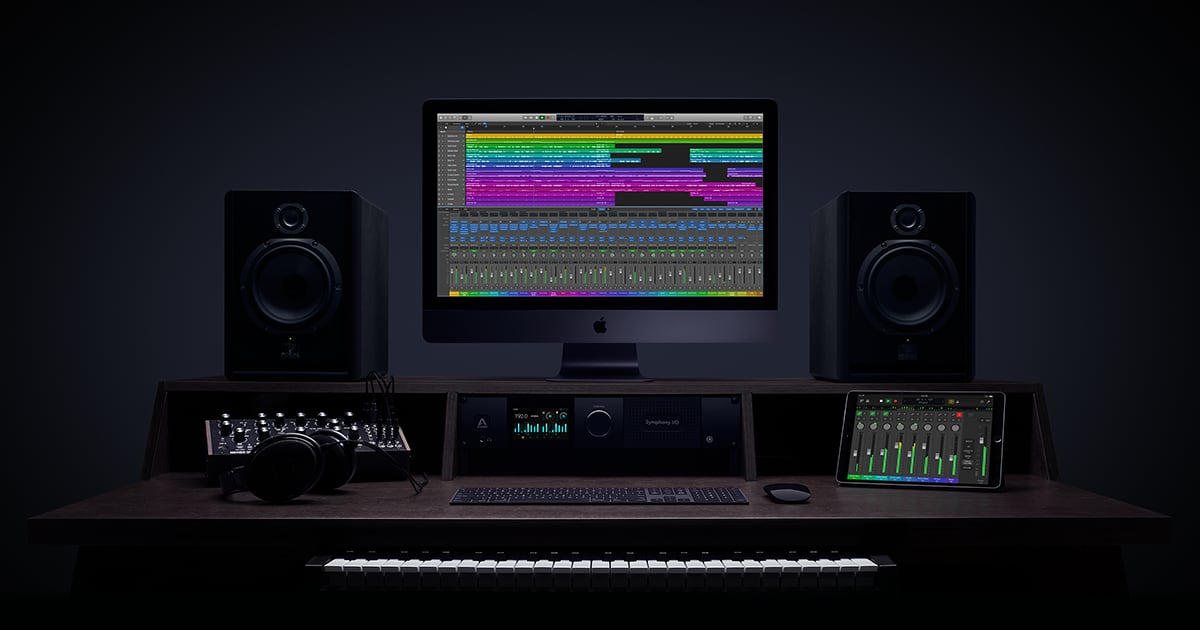We’d all like to have a studio like this, wouldn’t we?
In this blog post i’m gonna talk…
…about some of the the most recognised synthesizers in history (not all of them fit, there are many and this is a humble top 10 ;P) the qualities that define them, what they were made for at the time and how they were differentiated at market level.
As I say, there are many great synths, so talking about the top 10 is a rather personal matter, and I say this because to document some of the properties of these synthesizers one of the sources I have resorted to are the forums of Hispasonic. com forums (highly recommended forum for any kind of musician), and some users were angry with a top 20 that was made in one of the threads because there were very emblematic synthesizers that were left out (if they were angry because some of them were missing in a top 20 with my top 10, I’m sure some of them are asking for a bonfire for me).
If you are interested in this blog you will surely be interested in Materials I work with, in this blog you can see what kind of devices I use to make all my my beats, custom instrumentals, rap bases (and other genres), acoustic music, etc.
10 -Moog Subsequent 37
Analogue monophonic synth created in 2014. It is the most recent of them all (maybe that’s why it is the last one in the top) and for many people it wouldn’t deserve to be here, but this synth is used a lot nowadays. It has very good sounds for genres like funk, as it has a good bass pressure, good leads and bass, many possibilities of sound configuration (adding harmonics, cutoff, resonance, envelope modification, EQ, different kinds of filters, effects, etc).
9-ARP 2600
Created in 1971, it is a patchable synthesizer with all the possibilities of the huge modular synthesizers of the first phase of creation of the first classical synthesizers but in an ultra-compact device (for the time it was very small compared to some pantagruelic modular synthesizers like the telharmonium).
What caught the attention of buyers at the time was that it had a fixed selection of the basic components of the device internally pre-wired, so you had a very successful classic modular sound feel in a portable and convenient device (although today with the marketing we have in synths I don’t think we would associate this synth hippopotamus as being portable).
8 Arp Odissey
It was created in 1972. The Oddisey, like the Minimoog – which we will discuss a few posts later – was the result of the idea of creating a low-cost synthesizer of small proportions, while retaining the quality of the great modulars, and it was a real success, although historically it seems that it has not been as well regarded as the Minimoog, but at the time they were like Coca Cola and Pepsi.
Like the Minimoog, this one had 37 keys, and similar possibilities as AR and ADSR envelope types. Very good leads and bass, as is typical of all analogue monophonic synthesizers. A rather peculiar feature of this synthesizer is that it provides possibilities to change subtractive synthesis parameters via faders and not via knobs or wiring as is the case with most older synths.
Behringer has created an exact clone of the original at a ridiculous price compared to the classic model, the Behringer Odyssey. Give it a check!
7-Yamaha CS 80
A synthesiser created in 1976. A mysterious device, but one that attracted quite emblematic figures in music created with synthesizers (can you imagine who I’m talking about?). The CS 80 is a huge, fat, robust, very heavy synthesizer (100 kg, certainly not very practical and portable).
Although it was a rather problematic synthesizer, because it was constantly out of tune and very expensive (very few units were sold), it is famous because it was used by the king of synthesis: the great Vangelis. About its sound, we can say that it is huge and epic: the pads and the strings sound like a sound storm with very compact basses. Really interesting.
6-Prophet 5
Created in 1978, it is considered a revolutionary device because it was one of the first analogue synths to introduce patch memory so that you could save the parameters you modified and create customised sounds and play them whenever you wanted.
Another innovation is the polyphony, as this is one of the first synthesizers that gave the possibility to play several sounds simultaneously, 5 sounds to be precise, which was very interesting for the time.
The Prophet 5 had several envelope filters, various oscillators and ring modulation effects, plus frequency cut-off controls.
If there is one thing I can say about the Prophet as a future Secuential Prophet 6 user, it is that its overall sound is very open, very energetic, penetrating, atmospheric, dirty, enveloping, cosmic.
Listening to Youtube reviews (I must have seen a thousand of them) gives the feeling that if you use it for music production you won’t need to compress the sounds because it already gives the feeling that they are all very compressed (it is also probable that the people recording the reviews compress them, but I have seen good and bad reviews, like a man recording the synth audio from the camera, and there I think there is very little compression).
5-Minimoog
Created in the late 70s, it is basically a compact version of the Moog Modular. As with the Arp Odissey, it got rid of the monumentality of the original modular version (size, weight, portability), it was compact and sturdy, making it possible to take it on tour.
This legendary little toy is a true monster of semi-modular synthesis. Even today, with its various revisions that preserve its classic thick sound, the best producers in the world (and those with the most money) have a small podium in their studio to record some sounds with this synthesiser.
4-Mellotron
This peculiar electro-mechanical instrument, which uses a magnetic band to emit its sound, was created by Harry Chamberlin in order to have an “everyday” instrument, but with the capacity to sound as big as a large symphony orchestra.
Even today you can still recognise very classic sounds from the Mellotron, such as Amaral’s flute in the song El universo sobre mí, which I leave here for you to listen to that characteristic timbre of the instrument.
Undoubtedly, a personal sound device, surealistic but fat, unique… and for proof this other video which by the way is very funny.
In this one you also have the rock guitar sound, which I have in my library of licensed sounds from the Mellotron on my Nord Stage 3, and which I use constantly when the artists I work for come here to buy beats acoustic-type beats.
3-Juno-60
This synthesiser is one of Roland’s greatest victories. It is a polyphonic synthesiser created in 1982, and has been used extensively for pop and house music. Like its predecessor, the juno 6, this synthesizer is analogue but its controls are digitally operated.
There is a modern Roland brand replica of the classic Juno 60 in software format. It's brutal!
2-Yamaha DX7
This synthesiser was used to compose and arrange the biggest pop hits of the 80s. Being the only digital synthesiser you will see in this category, it has the 2nd place (that is very, very rare, because digital synthesis, besides being often a kind of imitation of analogue synthesis [although more practical and comfortable, of course, hence its imposition on the market] is usually quite stigmatised and undervalued in the world of nostalgic producers, among which I include myself).
Created in 1986, it is a pioneer in FM synthesis, and has a sound that if you listen to it without knowing it, you think it is analogue because of the thickness and purity of its sound. Undoubtedly one of the best synthesizers in history.
1-Roland Jupiter-8
The king, the most loved and prized synthesizer in all studios: the producers who have it take care of it like a king. Created in 1981, with 8-voice polyphony, it was the first keyboard with split function, which allows you to separate the keyboard into more than one sound and put a different patch on each part. It was used for big hits like Michael Jackson’s Thriller.
In conclusion, in addition to a robust sound, it was a totally futuristic synthesiser for its time, which was able to introduce very important advances in the synthesis of the time, little less than an enormous technological revolution within analogue synthesisers.
As an admirer and fervent listener of this synthesizer I would define it as pure sonic power, an inimitable intensity and a sonic expansion that drives you crazy when you listen to it. Here is a video of a producer arranging and recreating the Jackson track I was telling you about. Absolutely overwhelming.
In the same way as in the Juno 60, there is a reliable software version of this behemoth, here it is:
I hope you have found this blog useful to see what we are capable of doing with technology without the need to kill ourselves with missiles and nuclear and hydrogen bombs (XDD). As always, I will be back next week to bring you more information and informative content. I wish you all the best music, best regards!
Remember that you can buy rap, trap, dembow, pop, r&b, dembow, reggaeton… beats! A la carte.
Os dejo algunos blogs del estilo:
